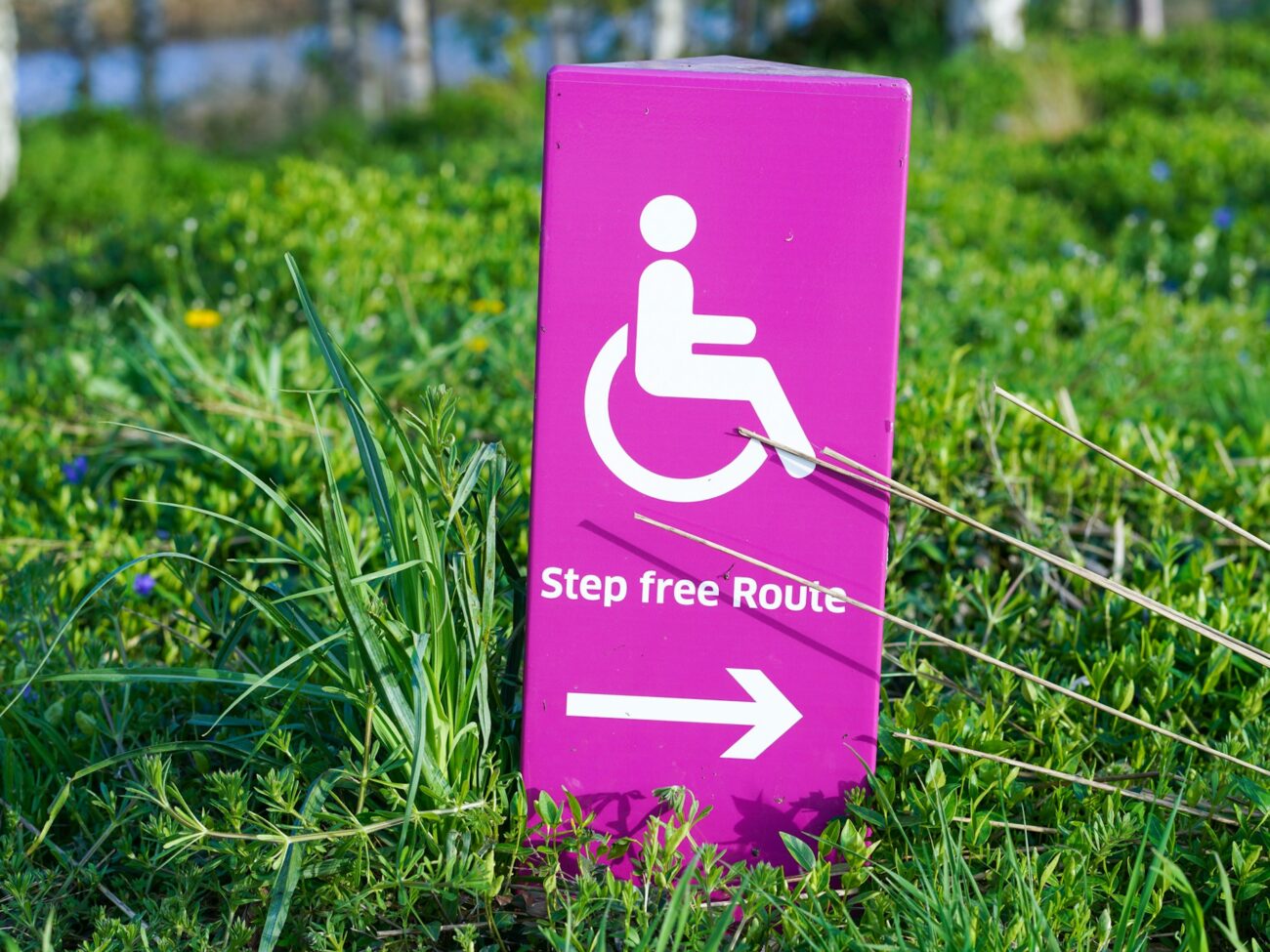In the medical model of disability, a disability is perceived as an impairment to a person’s body system or function, and the goal of this model is to “correct” or treat that impairment. According to the social model of disability, on the other hand, it is external barriers – such as the built environment, and systems and processes – that impact or prevent those with a disability from participating in society.
It is these barriers that forward-looking associations are looking to reduce and remove.
The Importance of Disability Inclusion
In recent years the focus of associations has shifted to considering the many ways of improving accessibility, and those taking this journey are reaping the benefits.
Associations have an ethical obligation to ensure that all members of their community are able to participate in, and contribute to, their organisation. This principle of inclusivity recognises the worth of every individual, irrespective of their backgrounds, identities and abilities. By advocating for accessibility, associations are asserting their commitment to an equitable society, and helping define standards..
Speaking to the International Association of Accessibility Professionals, Nell Koneczny – appointed the first accessibility and meetings coordinator for the American Anthropological Association in 2019 – had this to say on the importance of associations driving change in this: “Associations can provide education that supports cultural change… we have the space and the privilege to really encourage these changes, and to support cultural change from an institutional level.”
In support of these values, governments across the world have introduced legislation to which associations must comply. In the United Kingdom, for example, the Equality Act of 2010 established a legal framework mandating certain provisions to help with the accessibility of professional organisations. Failure to adhere to such regulations can have legal repercussions for associations, not to mention inflicting reputational damage.
Society has improved its standards when it comes to the accepted ethics of professional organisations. There is an expectation that, as well as providing benefits for their members, associations and other professional bodies must demonstrate a commitment to furthering social causes. Associations that demonstrate that effort has been made to improve the accessibility of their organisations garner a more favourable public perception – assisting with member, partner and sponsor attraction.
Crucially, by removing barriers to engagement, associations create an environment that not only welcomes professionals with disabilities, but empowers them. Aside from widening the pool of potential members, fostering a community that better serves those with disabilities will have a positive effect on recruitment and retention rates.
What About Digital Accessibility?
Digital accessibility involves the removal of barriers that prevent a person from being able to interact with the digital world.
Many people with disabilities use assistive technologies, such as speech input software, to help navigate the virtual realm and, as the International Association for Accessibility Professionals highlight, “artificial intelligence and other emerging technologies have a great potential to improve accessibility and assistance technology”. At present, however, no technologies can fix an inaccessible website, and online content must be created with disability inclusion in mind.
When people think of digital accessibility, considerations like colour contrast, typography size and layout often come to mind. While these are important, there are more comprehensive, internationally recognised standards that associations can, and should, adhere to.
These Web Content Accessibility Guidelines identify four accessibility principles for disability inclusion online: the content can be perceived through at least one sense, people can use interactive elements (no matter how they’re interacting with the content), people can understand what the content means and how to use it, and that people should be able to use websites on any device or with any type of assistive technology.
Improving digital accessibility can also have unintended benefits for an association. In order to make content more accessible, many organisations will add closed captions, alternative text and audio descriptions to their digital materials. This allows search engines to index the content more easily, enhancing its reach and performance.
As Debrah Ruh, CEO and Founder of Ruh Global IMPACT – a strategic consulting firm specialising in accessibility and digital inclusion – sees it: “Accessibility benefits everyone. We must make it part of the DNA of every organisation and agency in the world.”
Key components of involvement with an association – such as professional development workshops and events – are made more valuable by the participation of individuals with a wide ranging spectrum of perspectives, backgrounds and ideas. By cultivating a community that actively encourages the engagement of all its members, associations enrich the experience, and provide increased value, for the entire organisation. As a result, membership becomes more worthwhile.
Collaborative Change
Having clear goals and a considered strategy are essential when seeking to improve disability inclusion, and the formulation of these requires the inputs of individuals and groups beyond the leadership team.
As Koneczny puts it, “[disability inclusion] really requires the buy-in from all levels of an association.” Members need to be engaged and involved in establishing objectives, defining measures for success and working towards change.
Good communication is of paramount importance, ensuring that members remain informed of accessibility resources, plans and developments. This can be achieved through a variety of channels, including newsletters, websites and social media, reducing roadblocks and opening up opportunities for members to actively participate in driving progress.
Getting the appropriate buy-in extends beyond an association itself. Working with the right partners, sponsors and vendors – those that share the same values and goals – is crucial to success. Weaving accessibility considerations into contracts is recommended to ensure that all parties remain accountable and committed to upholding agreed standards, fulfilling their role in fostering change.
Disability inclusion consultants, experts in this arena, can also be leveraged to assist with the development of actionable plans to improve accessibility. Their experience and guidance can be instrumental in ensuring that organisations are setting the right objectives, and undertaking the correct actions to attain them.

Actioning Accessibility
Each association is unique and in a different stage of their journey towards disability inclusion and so providing actionable guidance that is applicable to all is difficult. That said, there are areas of commonality amongst associations that can be reviewed and adjusted in order to enhance accessibility.
When appraising the accessibility of an association, it is recommended to do so with the assistance of a third-party, professional body who can then provide independent recommendations for improvements.
Reviewing and revising existing policies and procedures, for example, as well as re-examining safety policies, recruitment procedures, and related protocols are all valuable aspects of the work towards greater inclusion.
Physical spaces, such as venues for conferences and workshops also clearly require accessibility assessment. Sharing tips for making activities more accessible, the British Science Association (BSA) highlights the importance of considering event venues holistically: “Many events and activities are great at meeting the accessibility needs of their attendees but give less consideration to speakers and backstage areas”.
The BSA also share that although finding a perfect venue is rarely possible, some key things to pay attention to include: step-free access to buildings and rooms, the ability to have live captioning or a hearing loop – a special type of sound system for use by people with hearing aids – and the provision of a quiet or calming room.
Forward-looking event facilities around the world are successfully implementing measures to make themselves more inclusive, and partnering with a venue that shares the same accessibility aspirations is recommended.
Sydney’s International Convention and Exhibition Centre, for example, recently announced their Disability Inclusion Action Plan – outlining their intention to make the venue more accessible and cementing themselves as an ally when it comes to disability inclusion. Amongst many other planned developments, the Plan seeks to ensure signage is appropriately colour contrasted and legible, dining areas include accessible seating for wheelchair users, and handrails are provided for the back of house elevators, as well as other relevant areas.
Digital accessibility (see sidebar), training and education, along with many other facets of the membership experience should also be reflected upon and ways should be found to improve them – again, ideally with the help of disability inclusion experts.
Commitments Rather Than Checklists
Actions should, however, be implemented at a manageable pace. Associations looking to foster a bright future by widening inclusion will achieve this with patience. Identifying the right partners, setting the correct objectives and familiarisation with the accessibility space all take time, and perseverance is needed if progress is to be made. Change won’t happen overnight and will be more lasting if well considered.
“Another thing to keep in mind is that accessibility is more than a checklist”, reminds Koneczny, “[it] is not a one and done initiative.”
Working towards disability inclusion has to be seen as an ongoing commitment to improving the membership for all, involving continuous iteration and development, and the involvement of an association’s entire community. Much can then be achieved, for the benefit of the association and society at large.
